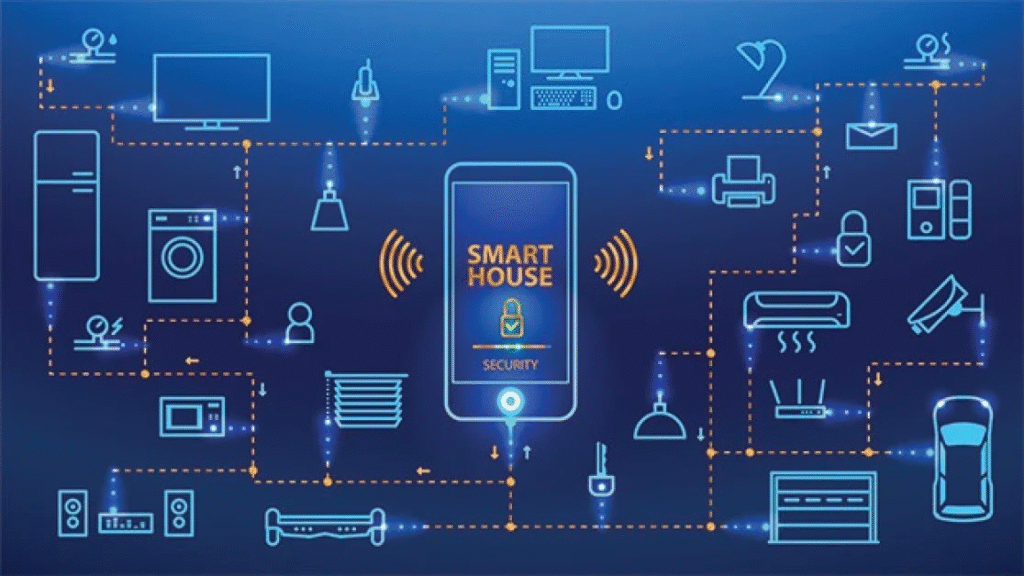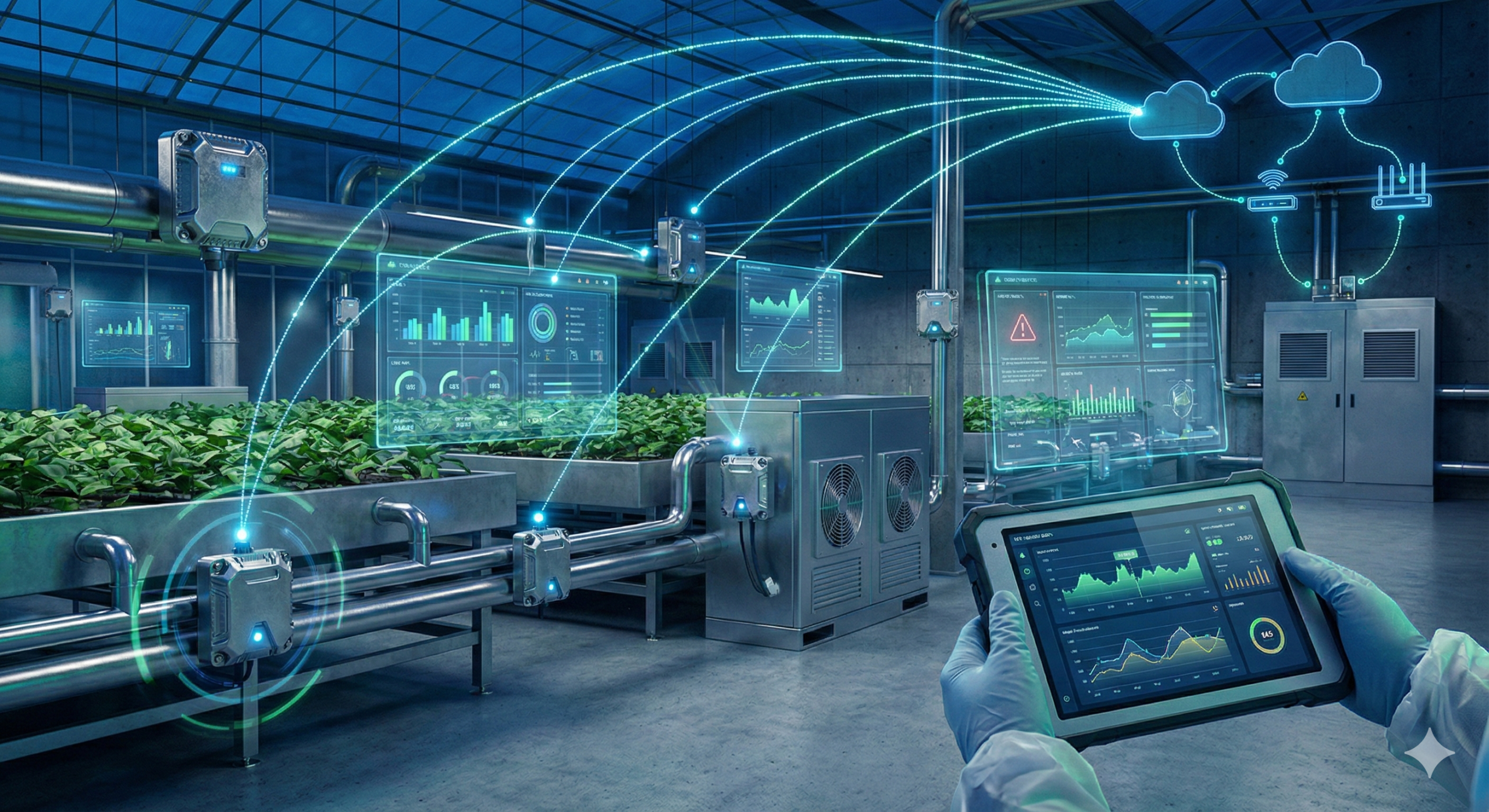Connected Futures Series
Based on an interview between Hélène Gey, Axceta’s CMO and Guillaume Girard
The energy industry is at a critical turning point. With increasing demands for efficiency, sustainability, and resilience, the convergence of Artificial Intelligence (AI) and the Internet of Things (IoT) is reshaping how energy is produced, stored, and consumed. From vehicle-to-grid integration to smart grids and AI-driven forecasting, energy utilities are finding new ways to optimize operations and enhance customer experience.
In this article of Axceta’s Connected Futures series, we explore the impact of AI and IoT on the energy sector, highlighting the most transformative trends and challenges ahead.
The Next Big Shift: Vehicle-to-Grid and the Future of Energy Storage
One of the most disruptive innovations emerging in the energy sector is Vehicle-to-Grid (V2G) technology. As electric vehicles (EVs) become more widespread, their batteries represent a massive, untapped energy storage resource. V2G allows EVs to not only draw power from the grid but also return excess energy when needed, helping stabilize demand fluctuations and reduce outages.
However, the widespread adoption of V2G requires overcoming key challenges:
- Infrastructure Readiness: Cars, chargers, and homes must be designed to support bidirectional energy flow.
- Standardization: Energy utilities must work with auto manufacturers to ensure compatibility across vehicles and charging systems.
- Consumer Incentives: Utilities must find ways to make V2G economically viable for homeowners, potentially through rebates, dynamic pricing, or subscription models.
Companies like Hilo have already demonstrated the potential of connected homes in optimizing energy usage. The next step is integrating EVs into this ecosystem to create a more resilient and flexible power grid.
Smart Grids & Real-Time Optimization: Predictive and Preventive Energy Management
AI and IoT are enabling real-time monitoring, predictive maintenance, and automated load balancing within energy distribution systems. By analyzing data from smart meters, connected appliances, and renewable sources, utilities can predict energy demand and prevent outages before they occur.
Key applications of AI in smart grids include:
- Automated Demand Response: Adjusting power consumption based on grid conditions.
- Predictive Maintenance: Identifying equipment failures before they happen to reduce downtime.
- Consumer Engagement: Sending real-time alerts to users about energy costs and efficiency tips.
Despite the potential, adoption remains slow beyond early adopters. The main challenge is finding the right balance between customer incentives and grid optimization. Utilities must demonstrate the value of smart grid investments, whether through lower costs, improved reliability, or seamless user experience.
To encourage adoption, some pilot programs are exploring playful incentives, for example, letting users say: “I want to treat myself to a Venti Frappuccino today, do what it takes to pay for it yourself.” The connected home then automatically optimizes heating, cooling, and appliance usage to save just enough on the energy bill to cover the cost of the coffee.
Empowering users to participate in a shared energy economy, similar to how Uber leverages individual vehicles, is becoming a real possibility. When the energy provider needs to reduce demand, it can financially incentivize users to join in, activating their Vehicle-to-Home (V2H) systems or connected devices to contribute at the right moment. AI would determine who’s best positioned to help, and at what price point. A typical use case? During a power outage in one neighborhood, AI could coordinate responses to help bring the grid back online without overloading local transformers.
Renewable Energy Integration: AI-Driven Forecasting for Maximum Efficiency
With the rise of solar, wind, and other renewables, energy providers are turning to AI to enhance forecasting accuracy and grid integration. Predictive analytics can anticipate weather patterns, solar output, and wind availability, helping utilities optimize energy distribution.
Potential benefits include:
- Improved Storage Management: AI can determine when to store excess energy or redirect it to high-demand areas.
- Real-Time Grid Adjustments: Automated responses based on energy forecasts can balance supply and demand.
- Consumer Participation: Homeowners with solar panels or battery storage can benefit from real-time insights on when to use or sell excess power.
However, the challenge remains: How can utilities meaningfully share these insights with customers? Providing easy-to-understand energy analytics can empower users to make informed decisions and actively contribute to grid stability.
Enhancing Energy Efficiency: AI & IoT for Homes and Industries
AI and IoT play a crucial role in reducing energy consumption, both for residential and industrial users. Connected devices can automate energy savings by adjusting consumption based on real-time conditions.
For industrial customers, AI-driven energy management can:
- Optimize operations by integrating energy demand forecasts with production schedules.
- Automate energy-saving measures during peak hours.
- Enable data-sharing between industrial users and utilities for better efficiency planning.
For residential users, a future scenario could involve AI acting as a personal energy assistant:
- Instead of manually adjusting settings, users could talk to their house, asking it to optimize energy savings.
- AI could suggest trade-offs, such as reducing home heating for a day in exchange for a specific purchase.
This consumer-focused approach to energy efficiency offers utilities an opportunity to enhance customer satisfaction and drive the adoption of smart energy solutions.
Grid Security & Cyber Resilience: Protecting the Future Energy Landscape
With the growing interconnectivity of energy systems, cybersecurity risks are increasing. AI-driven energy management introduces new vulnerabilities, making grid security a top priority.
Key security measures include:
- Resilient IoT devices: Preventing unauthorized control of home energy systems.
- Frequent Software Updates: Ensuring all smart grid components remain secure against cyber threats.
- AI-powered Threat Detection: Leveraging machine learning to predict and prevent cyberattacks in real-time.
- Quantum-Resistant Security: Preparing for future cyber threats posed by quantum computing advances.
As energy systems become smarter, utilities must proactively safeguard critical infrastructure while enabling innovation.
Industry Adoption: Where to Start?
For companies looking to integrate AI and IoT into their energy operations, the journey starts with three key steps:
- Define the Value: Identify the specific problem AI and IoT will solve before investing in technology.
- Leverage Existing Data: Many utilities already collect vast amounts of data, and AI can unlock new insights and efficiencies.
- Partner with Experts: Collaboration accelerates AI adoption and ensures robust implementation, whether through established cloud providers or specialized energy tech firms.
The future of energy lies in smart, interconnected, and AI-driven solutions. As these technologies evolve, their impact will extend beyond efficiency and cost savings to creating a more sustainable and resilient energy ecosystem.




